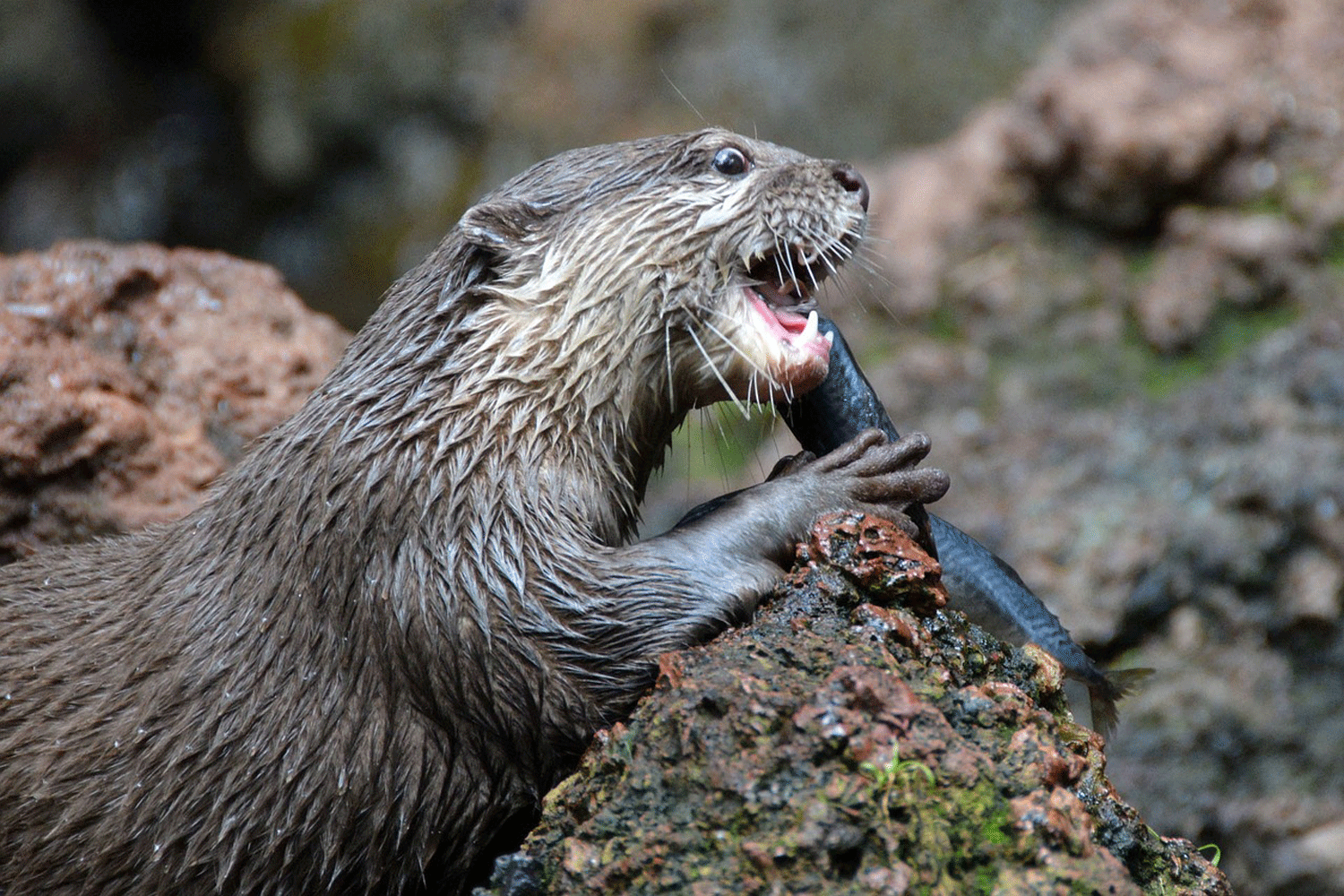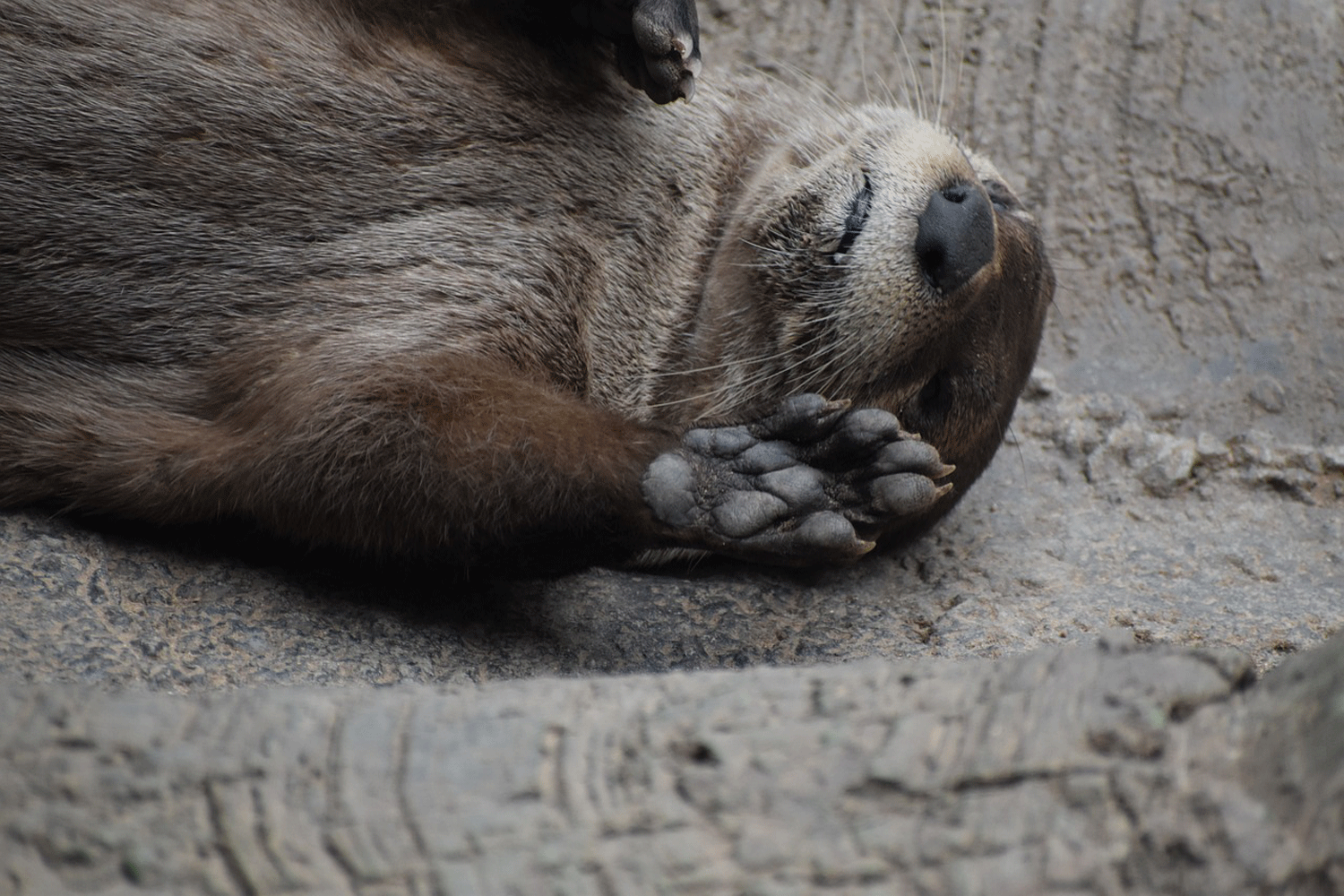
Facts
The European otter is a semi-aquatic mammal found throughout rivers, lakes, and coastal areas across Europe. With sleek brown fur and webbed feet, the otter is built for a life in and around water. Its streamlined body and powerful tail enable it to swim effortlessly while hunting for fish and other prey. As a skilled predator, the otter plays a crucial role in freshwater ecosystems, helping to keep fish and aquatic invertebrate populations balanced. These otters are often solitary, marking their territory with scent to signal other otters. Known for their playful nature, they’re sometimes seen sliding down riverbanks—a behavior that may serve both as maintenance for their fur and for territory marking.
Nature’s river guardian—keeping waterways healthy and balanced with each swift dive!
Length: 57-95 cm
Tail: 35-45 cm
Weight: 7-12 kg
Diet: Primarily fish, but also amphibians, crustaceans, and occasionally small mammals and birds.
Average Lifespan: 10 years old, although few survive more than 5 years.
When to see them: Year-round, with activity mostly at night or during dawn and dusk.
UK population: est. 11 000 in Britain.
UK conservation status: GB Red List : Least Concern (LC); Least Concern (LC) in England, Vulnerable (VU) in Scotland and Wales; globally, Near Threatened (NT). They are fully protected in the UK under Schedule 5 of the Wildlife and Countryside Act 1981.

Behaviour
European otters are skilled, agile swimmers, using streamlined bodies and powerful tails to dive and catch fish. With sensitive whiskers ("vibrissae"), they detect movement in murky water, making nighttime and dawn their prime hunting times. They are primarily solitary, except for mothers raising cubs, and are territorial, marking boundaries with "spraints" (scented droppings) on rocks or logs to communicate with other otters.
Otters are known for their playful behavior, sliding down riverbanks or chasing one another, which helps young otters practice hunting skills and maintain social bonds. They establish dens, or "holts," near water, often in secluded areas among tree roots or under logs, and make temporary resting spots, called "couches," along riverbanks as they patrol their territory.

Their Threats
- Habitat Loss: Pollution, urbanization, and agricultural expansion have led to loss and fragmentation of otter habitats. Clean, undisturbed waterways are essential for their survival.
- Water Pollution: Pesticides, industrial waste, and sewage can contaminate otter habitats, reducing fish stocks and exposing otters to harmful chemicals.
- Fishing Nets and Traffic: Otters can become entangled in fishing gear, which can lead to injury or death. They are also at risk from road traffic when crossing roads near water bodies.
- Climate Change: Warmer temperatures and changing rainfall patterns affect water levels, impacting fish populations and the availability of clean freshwater habitats.

How you can help
- Support Waterway Clean-Up Efforts: Volunteering for or donating to waterway restoration projects helps ensure otters have access to clean, healthy habitats. For more information on how to help, please click here.
- Reduce Pesticide Use: Limiting chemical runoff helps prevent water pollution, keeping otter habitats safe and fish populations healthier.
- Encourage Natural Habitat Preservation: Advocating for the protection of rivers, wetlands, and woodlands supports the ecosystems otters depend on.
- Drive Carefully Near Waterways: Being cautious near rivers and lakes can help reduce road accidents that pose a threat to otters crossing between water sources.
Frequently Asked Otter Questions
If a baby otter’s mother is killed or scared off, the cub will not be able to fend for itself in the wild.
If the cub has their eyes closed, then they’re too young to be above ground on their own so contact us straight away.
If you come across an otter cub that’s calling for their mother, monitor them from a distance so long as the cub is in a safe place. If the mother does not return within an hour or two, or before dark, please call our emergency helpline is 01372 360404.
If you come across an injured or sick otter, please contact our helpline on 01372 360404
Signs to be aware of include:
- Twitching.
- Not reacting to noise.
- Falling over.
- Not moving away when approached by a human.
- Open wounds.
- Breathing with mouth open or panting heavily.
- Lots of flies around the otter.
You should monitor the otter until one of our animal rescue officers arrives to assist. Don’t try and rescue them yourself as they can still have a sharp bite, and don’t try and look after it as they need very specialist care to survive.
Otters are typically solitary animals, coming together only to mate. They can breed year-round, but most cubs are born between May and August. Following a nine-week pregnancy, females usually give birth to two or three cubs, which are born blind and covered in short grey fur.
Female otters raise their young alone. Around 10 weeks after birth, the mother brings her cubs out of the den for the first time, and shortly after, she introduces them to swimming. The cubs remain with her until they’re mature enough to survive on their own. Once independent, otters can live up to 10 years in the wild.
How you can help
Any help you give can make a huge difference and keep us saving wildlife.
